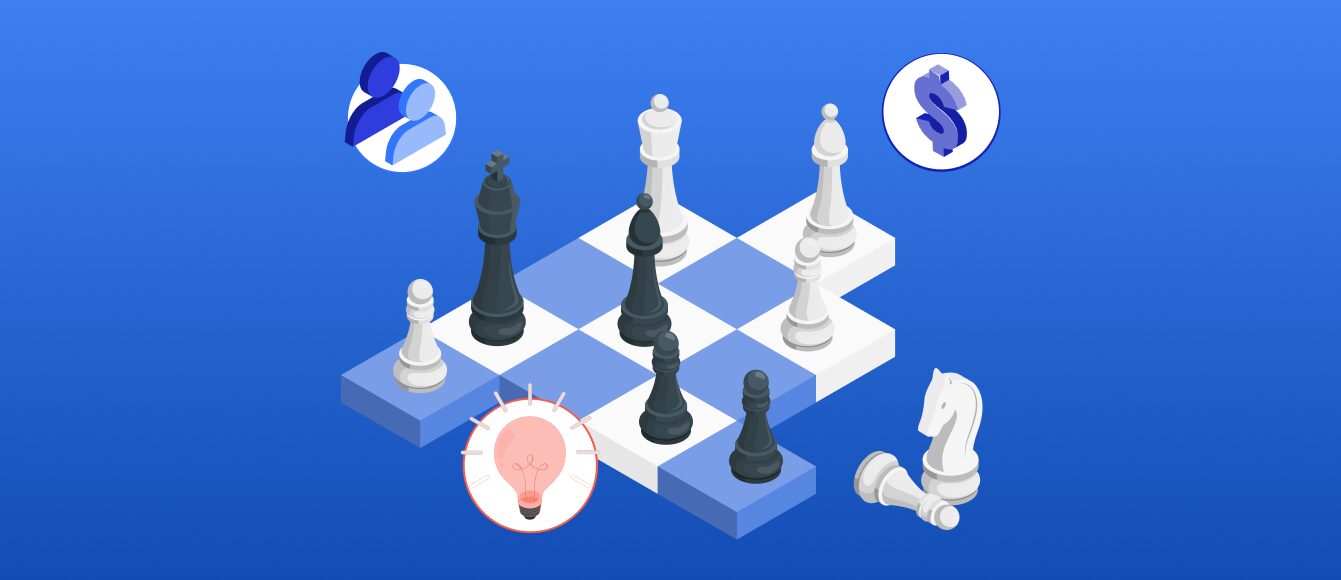Agile Vs Waterfall: How to Find a Balance?



Using Agile Vs Waterfall? That’s the question that might have brought you here. Don’t worry, you have landed at the right place, and you’re about to learn some interesting facts about both of these management tools.
You may already know the biggest difference between Agile and Waterfall. The former offers flexibility and a lot of opportunities to change, while the latter is rather firm and linear. Agile facilitates constant improvements through the collection of user feedback, while Waterfall, is set in stone.
This doesn’t necessarily mean that one methodology is better than the other. Both of these tools have their own application and work best in specific types of projects. In this article, you will learn the similarities and differences between Agile and Waterfall. You will learn how to combine the two to create a hybrid management tool that will help you achieve your final goal in time and within budget.
Waterfall Vs Agile: A Comparison
Agile: A Quick Recap
A group of industry thought leaders created Agile project management methodology after realizing that the usual Waterfall approach has many limitations. Thus, they wrote the famous Agile Manifesto and included these four core values in it:
- Individuals and interactions over processes and tools.
- Working product over comprehensive documentation.
- Customer collaboration over contract negotiation.
- Responding to change over following a plan.
Before companies started using Agile methodology, teams focused on having the best tools and processes to reach their end goal. In Agile, however, people are given preference over processes and management tools. Enrolling in agile certification courses helps professionals understand this shift and effectively implement Agile principles in real-world scenarios.
Also, back in the day, there would often be discrepancies between what the customers required and what the final product actually looked like. Agile solves that through ongoing customer collaboration and by providing working software. Instead of offering them one final product in the end.
The biggest feature of Agile is embracing change instead of being resistant to it. For instance, while developing new software, technology or customer needs could change. In such an event, sticking to the previously agreed-upon product could be futile and modifying the product on an ongoing basis would be the only viable option.
But like any other project management methodology, Agile comes with its own pros and cons. Let’s discuss some advantages and disadvantages of Agile now.
Advantages:
- Regular sprints increase productivity and output drastically.
- If deliverables or the project scope changes in the middle of the project, teams can handle them with efficiency.
- Agile values transparency, so clients can stay updated on the progress.
- The team delivers working software after short periods. Hence, they make modifications as per the client’s request.
- Through daily stand-ups, project managers can get a better idea of what the team is doing on a particular day.
Disadvantages:
- The project scope and timeline could change every now and then. Some employees may find these changing goalposts stressful.
- Implementation of Agile means that various departments will work on multiple phases of one project at the same time. This could result in miscommunication and overlapping tasks.
- Deadlines can be hard to create or manage because schedules and timelines in Agile are not very rigid and change is common.
- Communication can be challenging during the implementation of Agile in large organizations due to a lack of documentation or poor organization of documents.
Waterfall: A Quick Recap
Waterfall, as opposed to Agile, is a linear project management methodology. It is used in projects where the end goal is clearly established and there is no room for change. Just like water in a waterfall flows from top to bottom without stopping, phases in Waterfall projects move in a predictable and predetermined motion. From the beginning itself, project deliverables, milestones, and a timeline is set and all the tasks in the project progress in a linear sequence.
Here are some pros and cons of Waterfall:
Advantages:
- The team can accurately predict project costs and timelines from the get-go.
- Due to linear sequence followed, everyone knows what is going to happen and when it is going to happen.
- Each phase has to be fully completed before starting the next one which helps to create a structured workflow.
- Measuring progress is very straightforward because a well-structured and robust timeline is created and approved at the start of the project.
- Clients cannot demand changes after the project has begun which prevents delays and missed deadlines.
Disadvantages:
- A lack of flexibility is the biggest con of the Waterfall project management methodology.
- As a linear sequence is followed, delay in one phase can prolong the entire project.
- Since ongoing client collaboration is not the norm in Waterfall, the team just works on agreed-upon deliverables. Clients may end up being dissatisfied with the final product.
- Continuing with the previous point, they may request changes or increase the project scope. This may result in scope creep.
- Issues with a current phase may go unnoticed until the next phase begins. This means that the team will have to take a U-turn and make things right before moving forward.
Agile Vs Waterfall: Which One Should You Choose?
Now that you understand both project management methodologies in detail along with their pros and cons. Let’s discuss how to choose the right methodology for your next project. In the Agile Vs Waterfall war, we can actually leverage the pros of both.
You see, Waterfall is better suited for projects in which teams have to adhere to strict norms and regulations that are imposed by the authorities. For instance, if a pharmaceutical corporation starts a new project for clinical trials of new medicine. They may have to create several phases for the project, potentially create a risk mitigation plan, send it over to the authorities for approval and then repeat the process for the next phase.
The same goes for other industries where proper planning is mandatory and there is no room for guesswork or failure. Take the aerospace industry as an example. One cannot create a new rocket propulsion system without checking tick boxes for every phase before moving on to the next one. There is no place for ‘incremental improvement’ or ‘failing forward’ in such projects. The team has to get it right within the first attempt or at least try its best to do so.
On the other hand, Agile may be a better option for specific industries, such as IT, design, marketing, consumer product development, etc. In these sectors, changes can be rapid and to keep up with the market demands, businesses must be able to embrace change. Agile is also a better choice for projects with a high client or stakeholder involvement. This ensures that the team as well as the client stay up-to-date with the progress of the project and help each other to create the best final product with continuous collaboration and feedback.
Is Combining Agile With Waterfall Possible?
Management tools are designed to help humans. This is why we should leverage the good aspects of all methodologies and create our own customized version that can help us achieve our goals.
For example, if you’re working on a large project that has predictable as well as flexible parts. You could use Waterfall for the predictable parts and Agile for the iterative and uncertain ones. For instance, a company in the U.S. that’s working on the release of an online app that enables people to invest in the stock market may need to go through various stages of approval from the U.S. Securities and Exchange Commission (SEC) and the Financial Industry Regulatory Authority (FINRA).
So, the project phases that require approvals can be worked on using the Waterfall method. However, Agile can be applied to other parts of the project, such as app design, graphic design, copywriting, content marketing, etc. In this way, a lot of time can be saved and the company can release the app before its competitors who may be following a Waterfall structure strictly and thus prolonging the project.
In short, if the project goals and outcomes are highly predictable or if one is working in a highly regulated industry, Waterfall may be the best approach. On the other hand, in the case of a dynamic industry, such as software development, where failing fast, experimentation and changes are the norm, Agile may be the better option. And ultimately, if a project contains both predictable and unpredictable parts, a hybrid of both these management tools may be the best option.
on a weekly basis.
